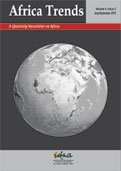Brendan Taylor, American Sanctions in the Asia Pacific
Brendan Taylor claims that his book is the first systematic analysis of American sanction policy in the Asia-Pacific during the presidencies of Bill Clinton and George W. Bush. The book is divided into six chapters which include introduction, conclusion as well as policy recommendations.
- Sanjeev Kumar Shrivastav |
- October 2010 |








